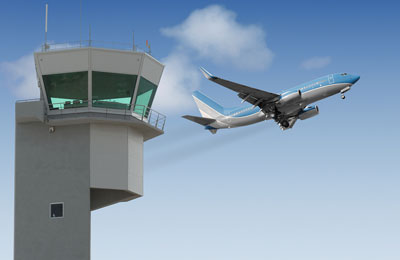
Air traffic management 'key to handle capacity'
RAS AL KHAIMAH, September 25, 2014
Infrastructure investment alone will not solve Middle Eastern air traffic capacity issues, a report said, adding that air traffic management (ATM) advancements will offer better handling of increased capacity of airports.
Through ATM modernisation, airlines, airports and air navigation service providers will see decreased flight delays, less fuel burn, fewer CO2 emissions and increased capacity, according to the white paper “Unlocking the Middle Eastern Skies: Opportunities and Challenges for Air Traffic Management” released at the Arab Aviation Media Summit in Ras Al Khaimah.
Airbus ProSky, the air traffic management subsidiary of Airbus Group, investigated the predicted growth of regional air traffic, the investment required to support its progression and offered solutions to the current challenges.
In the UAE, airlines generate approximately 93 million passengers per year - 8 per cent of international air traffic – most of which came through Dubai International Airport (66 million), Abu Dhabi International Airport (16.5 million) and Sharjah International Airport (8.5 million).
Emirates alone carried 43 million passengers, whilst Etihad carried 11.5 million. The number of passengers passing through UAE’s airports is set to cross 100 million this year, and that number is expected to grow to 150 million by 2020.
This surge can be attributed to the addition of the new aircraft to the growing fleets of Emirates Airline, Etihad Airways, Air Arabia and FlyDubai. The current combined aircraft order of the four UAE carriers is in excess of 600 – one of the highest in the world. By 2020, the total fleet size of the four UAE-based airlines is expected to double the current fleet size to 700.
To and ensure the evolution and growth of the industry, the UAE is investing more than $28 billion in expanding aviation infrastructure. Growing passenger traffic also prompted Dubai to open Al Maktoum International Airport, designed to handle 160 million passengers.
However, the industry faces obstacles including opening up more airspace for cross-border civil aviation, better management of fragmented air space, increased coordination between civil and military aviation authorities and better utilisation of civil and military airspace and adaptation of the latest technology to boost capacity and efficiency.
“As the Middle East’s aviation industry continues to grow, it will contribute significantly to the economy - both directly and indirectly – by creating numerous jobs and acting as one of the main enablers for the growth of other industries, such as tourism and commerce,” said Paul Frank Bijou, CEO of Airbus ProSky.
“Through increased dialogue and collaboration, we can overcome the challenges to ATM modernization and realize the full benefits of increased capacity,” he added. – TradeArabia News Service







